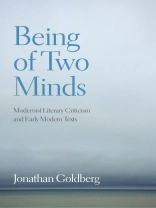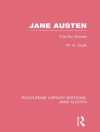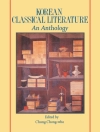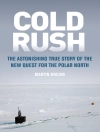Being of Two Minds examines the place that early modern literature held in Modernist literary criticism. For T. S. Eliot, Virginia Woolf, and William Empson, the early modern period helps model a literary future. At stake in their engagements across time were ontological questions about literature and its ability to mediate between the one and the many, the particular and the general, life and death, the past and the present. If reading and writing literature enables the mind to be in two places at once, creative experience serves as a way to participate in an expanded field of consciousness alongside mortality.
Goldberg reads the readings that these modernists performed on texts that Eliot claimed for the canon like the metaphysical poets and Jacobean dramatists, but also Shakespeare, Milton, Montaigne, and Margaret Cavendish. Ontological concerns are reflected in Eliot’s engagement with Aristotle’s theory of the soul and Empson’s Buddhism. These arguments about being affect minds and bodies and call into question sexual normativity: Eliot glances at a sodomitical male-male mode of literary transmission; Woolf produces a Judith Shakespeare to model androgynous being; Empson refuses to distinguish activity from passivity to rewrite gender difference.
The work of one of our leading literary and cultural critics, Being of Two Minds spans centuries to show how the most compelling and surprising ideas about mind, experience, and existence not only move between early modernity, high modernism, and our own moment, but are also constituted through that very movement between times and minds.
Зміст
Introduction | 1
1. Impersonal Eliot | 25
2. Anonymous Woolf | 67
3. Ambiguous Empson | 107
Acknowledgments | 153
Notes | 155
Index | 175
Про автора
Jonathan Goldberg was Arts and Sciences Distinguished Professor Emeritus at Emory University. His many books include Come As You Are, After Eve Kosofsky Sedgwick; Saint Marks: Words, Images, and What Persists; Melodrama: An Aesthetics of Impossibility; and Sodometries: Renaissance Texts, Modern Sexualities. His writing centered on early modernity but ranged from Sappho and Willa Cather to Patricia Highsmith and Todd Haynes in exploring questions of materiality and sexuality.












